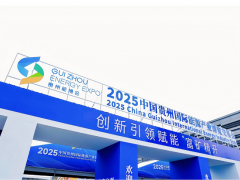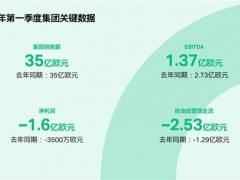據(jù)能源世界網(wǎng)7月6日?qǐng)?bào)道,據(jù)國(guó)際能源署( IEA )預(yù)測(cè),今年印度的天然氣消費(fèi)量將增長(zhǎng)4.5%,而全球需求將在反彈3.6%。
根據(jù)IEA的最新報(bào)告顯示,預(yù)計(jì)到 2024 年,全球天然氣需求較2019年疫情前水平將增長(zhǎng) 7 %。由于北半球異常溫和的冬季和新冠疫情的影響,全球需求在 2020 年下降了1.9%。
IEA能源市場(chǎng)和安全主管 Keisuke Sadamori 表示,天然氣需求的反彈表明,全球經(jīng)濟(jì)正在從新冠疫情的沖擊中恢復(fù),天然氣正在繼續(xù)取代排放密集型燃料。2020—2024年,天然氣需求增長(zhǎng)的近一半來(lái)自亞太地區(qū)。
盡管印度第一季度天然氣需求同比下降 5 %,但預(yù)計(jì)今年印度天然氣的需求將增長(zhǎng)4.5%。
據(jù)IEA稱,正在進(jìn)行的第二波疫情和高液化天然氣價(jià)格造成的經(jīng)濟(jì)影響給我們的預(yù)測(cè)帶來(lái)了下行風(fēng)險(xiǎn)。東北亞冬季能源危機(jī)后,LNG現(xiàn)貨價(jià)格高企,抑制了需求,特別是在煉油和石化行業(yè),據(jù)報(bào)道,一些運(yùn)營(yíng)商已從進(jìn)口液化天然氣轉(zhuǎn)向液體燃料。
與新冠肺炎相關(guān)的封鎖和液化天然氣價(jià)格高企也影響了第二季度的需求。
在亞洲,液化天然氣現(xiàn)貨價(jià)格在第二季度同比增長(zhǎng)超過(guò)四倍,均價(jià)達(dá)到9.8美元/百萬(wàn)英熱單位——這是自 2014 年以來(lái)的最高值。IEA表示,印度和韓國(guó)的強(qiáng)勁購(gòu)買興趣,加上液化工廠計(jì)劃內(nèi)和計(jì)劃外的停產(chǎn),為液化天然氣現(xiàn)貨價(jià)格提供了上行支撐。
根據(jù)IEA的數(shù)據(jù)顯示,今年下半年亞洲現(xiàn)貨價(jià)格將接近13美元/ 百萬(wàn)英熱單位,導(dǎo)致整年均價(jià)將超過(guò)11 美元/百萬(wàn)英熱單位——這是自2014年以來(lái)的最高水平。
郝芬 譯自 能源世界網(wǎng)
原文如下:
India’s natural gas consumption to rise 4.5% in 2021: IEA
India’s natural gas consumption will rise 4.5% while global demand will rebound by 3.6% in 2021, the International Energy Agency (IEA) has forecast.
By 2024, the global gas demand is forecast to be up 7% from 2019’s pre-Covid levels, according to the IEA’s latest report. Global demand dropped by 1.9% in 2020 due to an exceptionally mild winter in the northern hemisphere and the impact of the Covid-19 pandemic.
“The rebound in gas demand shows that the global economy is recovering from the shock of the pandemic and that gas is continuing to replace more emission-intensive fuels,” said Keisuke Sadamori, the IEA’s director of energy markets and security. Almost half of the increase in gas demand between 2020 and 2024 comes from the Asia Pacific region.
India’s gas demand is expected to expand by 4.5% in 2021 despite a 5% year-on-year contraction in the first quarter. “The economic fallout from the ongoing second wave and high LNG prices present downside risks to our forecast,” the IEA said.
Consumption contracted in the first quarter “as high spot LNG prices in the aftermath of the northeast Asian winter energy crisis tempered demand, especially in the refining and petrochemical sectors, where some operators reportedly switched from imported LNG to liquid fuels,” according to the IEA.
Covid-linked lockdowns and high LNG prices hurt demand also in the second quarter.
In Asia, LNG spot prices more than quadrupled year-on-year in Q2 to reach an average of $9.8/MBtu—their highest Q2 average since 2014. “Strong buying interest from India and Korea, together with a combination of planned and unplanned outages in liquefaction plants, provided upward support to LNG spot prices,” said the IEA.
Asian spot prices are set to average close to $13/MBtu through the second half of the year, resulting in an overall annual average of over $11/MBtu—the highest level since 2014, according to the IEA.
免責(zé)聲明:本網(wǎng)轉(zhuǎn)載自其它媒體的文章,目的在于弘揚(yáng)石化精神,傳遞更多石化信息,并不代表本網(wǎng)贊同其觀點(diǎn)和對(duì)其真實(shí)性負(fù)責(zé),在此我們謹(jǐn)向原作者和原媒體致以敬意。如果您認(rèn)為本站文章侵犯了您的版權(quán),請(qǐng)與我們聯(lián)系,我們將第一時(shí)間刪除。







